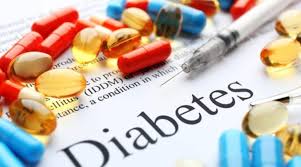The Life and Times of Baby Boomers
The
Second of Several Fears
Baby boomers (often
shortened to boomers) are the demographic cohort following the Silent
Generation and preceding Generation X. The generation is generally defined as
people born from 1946 to 1964, during the post–World War II baby boom. The term
is also used outside the United States but the dates, the demographic context
and the cultural identifiers may vary. The baby boom has been described
variously as a "shockwave" and as "the pig in the python".
Baby boomers are often parents of late Gen Xers and Millennials.
Today there are 76,400,000
baby boomers out of 332,000,000 Americans.
Boomers are far and away the largest generation in American and by 2030
every single one of them will be over age 65.
The economic, social, and healthcare impact of this development ais
enormous. Just as an example, there is
no person on earth who has a clue how Social Security and Medicare can be
financed for the Baby Boomer generation.
Baby Boomers harbor several
legitimate concerns about their future.
Near the top of the list is diabetes.
The 76.4 million baby
boomers (individuals born in the United States between 1946 and 1964) represent
close to one-fourth of the US population and are major contributors to the
diabetes mellitus (DM) epidemic. It is projected that one in every four baby
boomers soon will be living with this chronic disease.
Type 2 diabetes is primarily
the result of two interrelated problems: Cells in muscle, fat and the liver become
resistant to insulin. Because these cells do not interact in a normal way with
insulin, they do not take in enough sugar. The pancreas is unable to produce
enough insulin to manage blood sugar levels.
One culprit of the boomers'
obesity-associated chronic disease could be the big dietary shift that began in
the 1950s to fast, convenient, processed foods with additives and preservatives. This generation is also overworked and busy,
making the pull of fast food even stronger.
The next generation of
senior citizens will be sicker and costlier to the health care system over the
next 14 years than previous generations, according to a new report from the
United Health Foundation. We are talking about you, baby boomers.
The report looks at the current
health status of people ages 50 to 64 and compares them to the same ages in
1999.
The upshot? There will be about 55 percent more senior
citizens who have diabetes than there are today, and about 25 percent more who
are obese. Overall, the report says that the next generation of seniors will be
9 percent less likely to say they have good or excellent overall health.
That is bad news for baby
boomers. Health care costs for people with diabetes are about 2.5 times higher
than for those without, according to the study.
It is also bad news for
taxpayers.
The Health of Baby
Boomers as They Age, For Better and Worse:
GOOD: 50 percent fewer
smokers
BAD: 55 percent more people
with diabetes
BAD: 25 percent more people
who are obese
BAD: 9 percent less likely
to say they have "very good" or "excellent" health
Source: United Health
Foundatio
"The dramatic increase
[in seniors with diabetics] has serious implications for the long-term health
of those individuals and for the finances of our nation," says Rhonda
Randall, a senior adviser to the United Health Foundation and chief medical
officer at UnitedHealthcare Retiree Solutions, which sells Medicare Advantage
plans.
Most of the costs will be
borne by Medicare, the government-run health care system for seniors, and by
extension, taxpayers.
Some states will be harder
hit than others. Colorado, for example, can expect the numbers of older people
with diabetes to increase by 138 percent by 2030, while Arizona will see its
population of obese people over 65 grow by 90 percent.
Here is a crude rule of
thumb that is generally true. If you are
diagnosed with diabetes at a particular age and have a certain life expectancy,
you subtract the former for the latter and divide by 2. Take the result and add it to the age of
onset diabetes, and that is your new life expectancy. Here is an example. If you at 50 years of age and have a life
expectancy of age 80, you subtract 50 from 80 and get 30. You divide 30 by two, and you get 15. You add 15 years to your current age of 50
and your likely revised life expectancy is 65.
Diabetes can be a wicked way
to die. It facilitates heart disease, stroke,
and amputation of various parts of the body to name a few complications.
Recently, someone remarkably
close to me shared that he had been diagnosed with diabetes. I asked if he was taking oral medications or
injections. With great pride he shared
with me that he had refused medications.
There would be no way for me to share with you how stunned I was. I inquired, “Why not?” He said that those medications were a money-making
scheme of the pharmaceutical industry and did not work anyway. That kind of ignorance strains one’s
credibility. His quality of life will
erode faster than necessary, and he will die prematurely.
While we all are at risk for
developing diabetes, we are not helpless.
Rigorous exercise and a quality diet can go to long way to preventing or
deferring Type II diabetes.
My message to you. Do not be a dope. Take care of yourself.
Jan Ricks Jennings
Senior Consultant
Senior Management Services
JanJenningsBlog.Blogspot.net

No comments:
Post a Comment